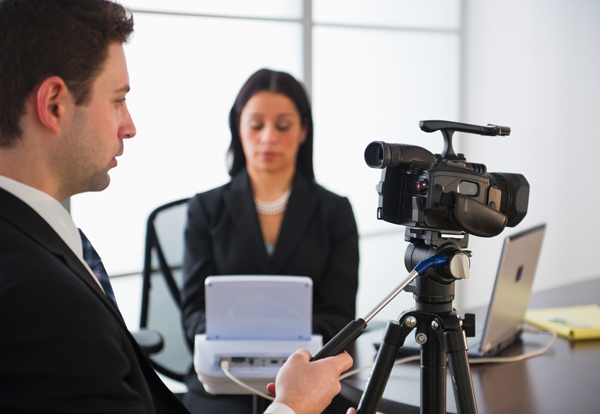Exploring the Vigor of Lawful Videography: a Comprehensive Insight Into Its Functionality in Maintaining Accurate Visual Records for Legal Instances
Lawful videography stands as an important element in the realm of lawful procedures, functioning as a quiet yet effective observer in the search of justice. The use of video technology in documenting lawful cases exceeds simple record-keeping; it encapsulates the very significance of events, feelings, and statements that unravel within courtrooms. By thoroughly capturing aesthetic evidence, lawful videography not only maintains the precision of these moments however also gives a deeper understanding of the intricacies included. As we explore the functionality and value of legal videography in the context of lawful cases, an extensive realization dawns upon the essential role it plays fit the course of justice.
Importance of Lawful Videography
Highlighting the pivotal function of lawful videography in modern-day legal procedures, its relevance depends on its ability to supply undeniable aesthetic evidence that enhances the presentation of testimonies and truths. By catching real-time occasions, depositions, and witness testimonies in a video style, lawful videography makes certain that every expression, information, and subtlety is properly preserved for later review. This visual documentation works as a powerful tool in courts, enabling jurors and courts to much better comprehend the context of an instance and make educated choices based upon today proof.
Furthermore, legal videography adds to boosted transparency and liability in the lawful system. In essence, the value of lawful videography lies in its capacity to maintain the integrity of the lawful process by capturing and maintaining accurate aesthetic records that sustain the quest of justice.
Functionality in Lawful Documentation
Lawful videography's role in modern-day legal process prolongs past offering visual proof; its functionality in lawful paperwork is important for precisely preserving the details of events and statements. Via the precise recording of depositions, court room proceedings, witness testimonies, and criminal activity scene examinations, lawful videography guarantees an unfiltered account of occasions that can be reviewed and assessed during the lawful procedure. This accurate paperwork functions as a vital source for judges, courts, and legal representatives to reference particular moments, body movement, face expressions, and nuances that may not be completely caught in created records alone.
Moreover, lawful videography plays a pivotal function in preserving the stability of lawful process by reducing the risk of misconception or adjustment of details. The aesthetic records captured through legal videography offer an objective depiction of the truths provided throughout a situation, using a thorough and reliable source of evidence that can considerably affect the result of legal disputes (Legal Videography). Fundamentally, the functionality of legal videography in legal documents works as a cornerstone in upholding openness, precision, and justness within the legal system
Significance in Visual Evidence Conservation
Maintaining visual proof through thorough recording strategies is a crucial facet of legal videography. By properly documenting these visuals, lawful videographers play an important duty in guaranteeing the honesty and authenticity of proof presented in court.
Visual proof preservation likewise aids in avoiding misconceptions or misinterpretations that can develop from written or verbal testaments. The ability to see and hear occasions as they occurred can considerably influence the outcome of a situation. Aesthetic proof can serve as an effective device for both the prosecution and protection in providing their arguments persuasively.
Duty in Ensuring Justice
In the pursuit of simply legal and fair end results, the duty of lawful videography is vital. Legal videography plays an important role in ensuring justice by providing exact and objective aesthetic proof that can considerably impact the end result of lawful cases.
Additionally, legal videography works as a method of preserving vital moments and details that might be missed or misunderstood in composed transcripts (Legal Videography). By recording scenes, actions, and communications in real-time, lawful videography helps protect against misstatements and ensures that all events included have accessibility to the exact same information, advertising transparency and liability in the legal procedure. Ultimately, using legal videography not just enhances the performance of lawful proceedings however also maintains the principles of justice and equity in the lawful system
Vital Tool for Legal Instances

Final Thought
In conclusion, lawful videography he has a good point plays a critical function in protecting accurate aesthetic records for legal instances. Its relevance lies in its functionality in lawful documentation, importance in aesthetic evidence conservation, and function in ensuring justice. As an important tool for legal situations, legal videography functions as a useful resource for offering aesthetic evidence and adding to the overall honesty of the legal procedure.
Legal videography's duty in contemporary legal procedures extends past providing aesthetic evidence; its performance in legal paperwork is necessary for accurately maintaining the details of testaments and events. In significance, the capability of legal videography in lawful documentation offers as a cornerstone in maintaining transparency, accuracy, and justness within the legal system.
Eventually, the usage of legal videography not only boosts the efficiency of legal process but likewise promotes the principles this link of justice and equity in the lawful system.

As an important device for legal instances, legal videography offers as a useful resource for providing aesthetic evidence and adding to the overall honesty of the legal procedure.